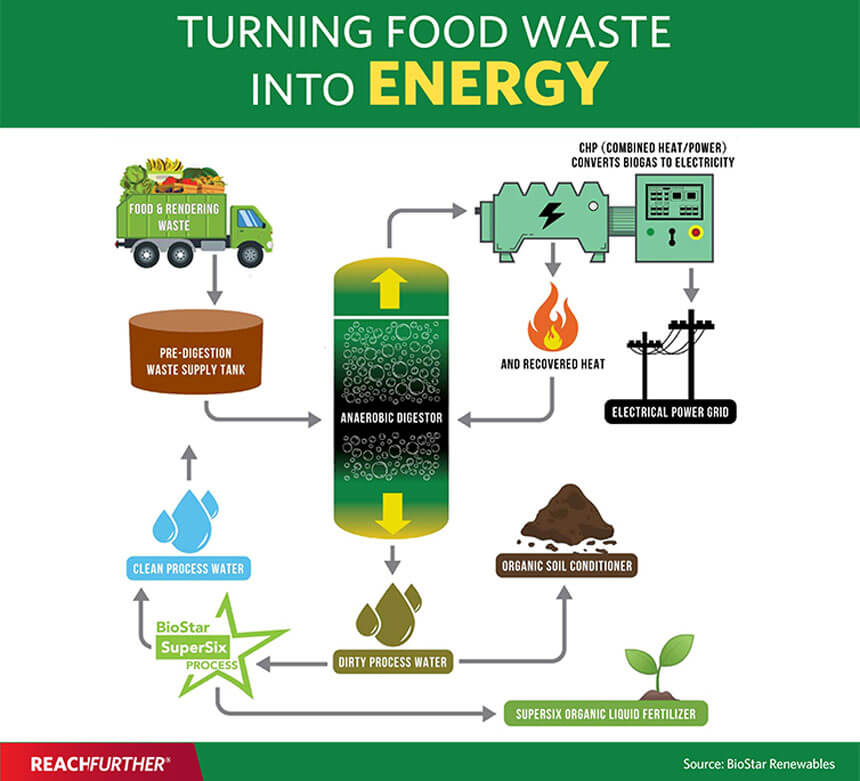Dialogues
Bill Love: Converting Waste to New Fuel through Anaerobic Digestion
By Daisy Lin

The CEO of BioStar Renewables talks about the future of renewable energy and operating one of the first large-scale biodigesters in California.
The nation’s landfills are running out of space. The U.S. produces more than 292 million tons of trash every year, and half of that goes into landfills. The Waste Business Journal predicts that only 15 years of landfill capacity remain. To prevent the situation from coming to a head, California has mandated that organic waste dumped at landfills be reduced by 75% by 2025, requiring that up to 27 million tons of organic waste be diverted. That law, California SB 1383, is set to go into effect on January 1, 2022. Other states like Massachusetts and Connecticut have also implemented waste restrictions.
In the face of the looming deadline, finding alternative solutions to reduce waste is urgent, and clean energy innovators are trying to address the issue through technology, creativity and new ventures.
Bill Love is on the forefront of these clean technologies. He is the CEO of BioStar Renewables, a waste-to-energy developer that engineers, builds, and operates renewable energy plants. BioStar runs one of the first large-scale industrial biodigester projects in California. The waste-to-energy facility, called Organic Energy Solutions, is financed by East West Bank. The facility treats food waste in a process called anaerobic digestion and turns it into biogas, clean electricity, clean water, and an OMRI-listed, organic liquid fertilizer named SuperSix™. The power is then sold to public utilities, which distribute the electricity to private customers including schools, commercial/industrial clients and cities. Love talked with Reach Further about the future of renewable energy.
Can trash really be a source of energy?
We believe that waste is the new fuel for our society. We will see a lot more waste conversion in the future because, quite truthfully, our landfills are filling up nationwide. Trying to get another landfill permitted is going to be very difficult because nobody wants them in their backyard.
In California, we’re dumping more than 5 million tons of food in our landfills every year, and when this food waste decomposes, it releases greenhouse gas into the atmosphere. What we’re doing is diverting this organic waste from the landfills and putting it through a process called anaerobic digestion to create renewable energy. What’s promising about our anaerobic digestion project is that unlike other clean energy projects that are intermittent—like solar and wind—this is baseload power with a steady supply. Our plant generates electricity 24 hours a day, seven days a week. And, at the end of it, we’re also producing potable water and organic fertilizer.
How do biodigesters and anaerobic digestion work?
The biodigester acts just like your stomach. We take pre-consumer food waste created in the manufacturing of food products, treat it, then feed it to the anaerobic digestion tank, where organic material is broken down by bacteria in an oxygen-free environment. This process produces methane. We capture the methane and subject it to combined heat and power to convert the biogas to electricity. We process 85,000 gallons of organic waste a day, which creates almost 22 million kilowatt-hours of electricity each year, enough power to supply 3,291 homes. We are selling that electricity to Southern California Edison under a 20-year power purchase contract.

Another byproduct that the biodigester produces is dirty process water. Rather than dumping that, we clean it up and repurpose that water, more than 19 million gallons, for industrial use. We also use it to produce a food-grade organic fertilizer, about 849,000 gallons of liquid fertilizer a year, and have an extensive amount of organic produce growers that are using our fertilizer to grow fruits and vegetables in California.
In the end, the plant will divert 93,850 tons of pre-consumer food waste from the Coachella and Lambs Canyon landfills each year.
You’re an electrician and entrepreneur, as well as an active investor, and work with more than a dozen companies through your venture funds. How did you convince others to invest in one of the state’s first large-scale anaerobic digestion plants?
Biodigesters have been used in Europe. They were commercialized in Germany after Russia cut off their natural gas supply. There are more than 17,000 biodigesters in Europe now, although they're very small in comparison. The Organic Energy Solution’s biodigester is much larger. Anaerobic digestion technology has been around for a long time. We are using SUEZ water technology, which is a French company. It’s pretty unique, and I think it’s probably the best technology out there for organic biodigestion. It has been challenging to get people to believe in the project and to invest in our dream, but our team’s experience in the food, waste and power industry gave us credibility.
How did you get this project financed?
We worked with Ken Edens and Don Danh in the clean tech lending division at East West Bank on several projects in the solar business. So when the biogas business opportunity came up, we turned to East West, because they understand the business, and they have been great with us. By investing in our project, East West Bank has helped us open the door for future waste-to-energy projects and to build a road to a cleaner future.

The State of California estimates it will need an additional 100 operational biodigesters in the next decade to meet demand, so we anticipate building more of these projects over the next few years.
Read more about Organic Energy Solutions and other clients in East West Bank’s Annual Report.
Contact East West Bank Clean Energy Team
Subscribe to the Reach Further Newsletter
Get inspiring stories in your inbox every month.

